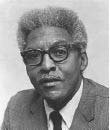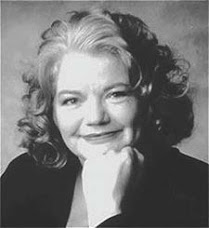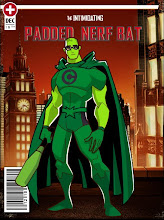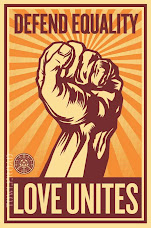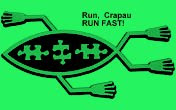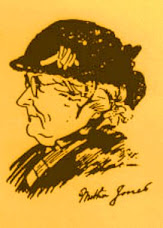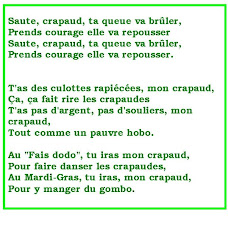 Happy Birthday
Happy Birthday
Mary Meigs (1917-2002) Writer, Artist,
Feminist Activisth/t to
glbtq An American-born painter who emigrated to Canada, the artist Mary Meigs is best remembered for her literary contributions and her feminist activism on behalf of elderly lesbians.
Mary Meigs was born on April 27, 1917 in Philadelphia, Pennsylvania to physiologist Edward Browning Meigs and Margaret Wister Meigs. After spending most of her childhood in the Washington, D. C. area, Meigs returned to Pennsylvania to attend Bryn Mawr College. After earning a B.A. in 1939, she returned to the Seven Sisters school as an English and creative writing instructor.
With the outbreak of World War II, Meigs joined the WAVES (Women Accepted for Volunteer Emergency Service), a part of the U.S. Navy. She served as a lieutenant junior grade from 1942 until 1945. A fellow WAVE provided her sexual initiation.
Following the war, Meigs studied art at the Art Students' League in New York from 1945 to 1947. She became a painter, honing her talents under the guidance of close friends and fellow artists Henry Poor and his stepdaughter Anne Poor. Meigs held her first exhibition of landscapes and portraits in 1950.
. . .Meigs met author Barbara Deming in 1954. The two became companions almost immediately and settled in a house in Wellfleet, Massachusetts. Both women remained closeted, however.
Meigs and Deming were part of a Cape Cod artistic circle that included abstract painter Philip Rothko, critic Edmund Wilson, and writer Mary McCarthy. Meigs is the character of "Dolly Lamb" in McCarthy's A Charmed Life (1955). The portrayal, typical of McCarthy's acid pen, blasted Meigs's alter ego for paintings "cramped with preciosity and mannerism." The brutality of the depiction wounded Meigs and alienated her from McCarthy and members of their circle.
Meigs never felt at ease in Wellfleet, believing that her heterosexual friends thought she had settled for a "half-life" out of a fear of men.
In 1959, Meigs and Deming traveled to India. Deming, fascinated by Gandhi's theories of nonviolence, became politicized. Upon returning to the United States, she immersed herself in leftist politics, much to the distress of the more timid Meigs.
As Meigs' relationship with Deming crumbled, Wilson introduced her to Québécoise author Marie-Claire Blais in 1963. The three women became enmeshed in a six-year relationship that ended when Meigs and Blais moved to Brittany, France in 1972.
In France, Meigs and Blais became involved in another ménage à trois. This stormy relationship with a woman that Meigs identified only as "Andrée" ended after four years, when Meigs and Blais moved to Montreal in 1976. Meigs chronicled the experience in The Medusa Head (1983), with the title referring to the monster that Andrée becomes when consumed with jealousy and anger.
In the 1970s, Meigs concentrated on writing but continued also to work on her art. Chiefly a book illustrator, she completed drawings for Blais's novels as well as illustrations for Indian lesbian author Suniti Namjoshi's The Conversations of Cow (1985).
But Meigs's focus decisively shifted to the creation of literature, and it is for her writings that she is best remembered. Once too terrified to respond to Edmund Wilson when he asked if she were a lesbian, Meigs now embraced life as a very public lesbian.
Lily Briscoe: A Self-Portrait (1981) is her most autobiographical work, exploring both her life as a lesbian and artist. The Box Closet (1987) is a childhood memoir that integrates her parents' diaries and letters with Meigs' discoveries as a daughter and granddaughter. Meigs also contributed to a number of periodicals including Room of One's Own, Fireweed, Canadian Women's Studies, The Body Politic, and Women's Review of Books.
In 1988, Meigs held her last exhibition of paintings. From this period onward, she used her prominence as a writer to become a spokesperson for elderly lesbians.
Meigs found aging to be liberating and did not believe that ageism existed within the lesbian community. She wrote, "I find that, as I grow older, the last remaining patriarchal shackles--guilts and self-imposed obligations--seem to fall off one by one and give way to imperturbable defiance."
In 1990, Meigs appeared in Cynthia Scott's The Company of Strangers, a Canadian film about a group of elderly women who are stranded in the wilderness and struggling to survive the ordeal. Her book, In the Company of Strangers (1991), describes her experiences during the filming of the movie.
Following a series of strokes, Meigs died in Montreal on November 15, 2002. She was survived by Blais.
||||||||||||||||||||||||||||||








